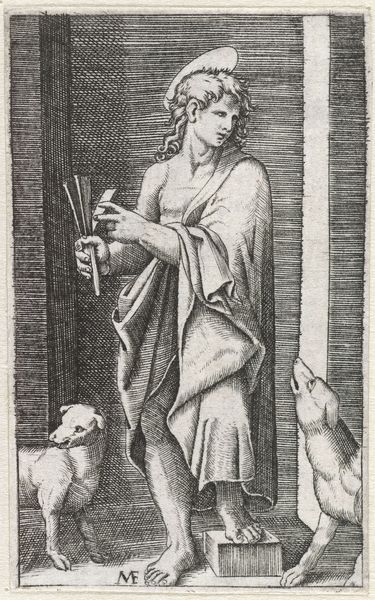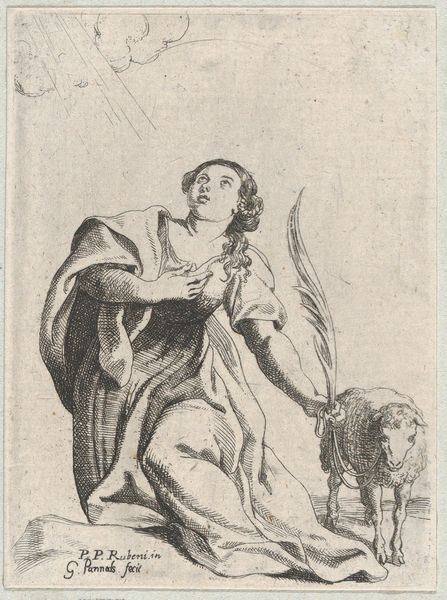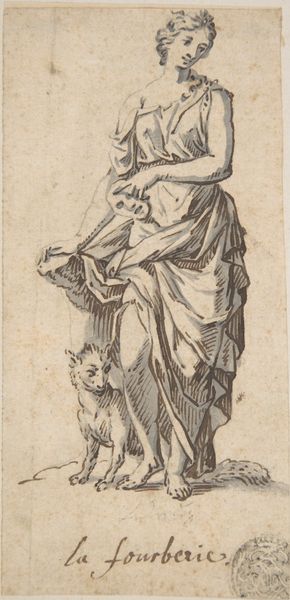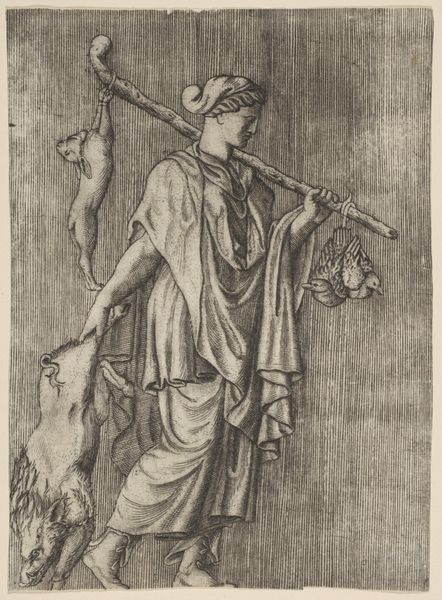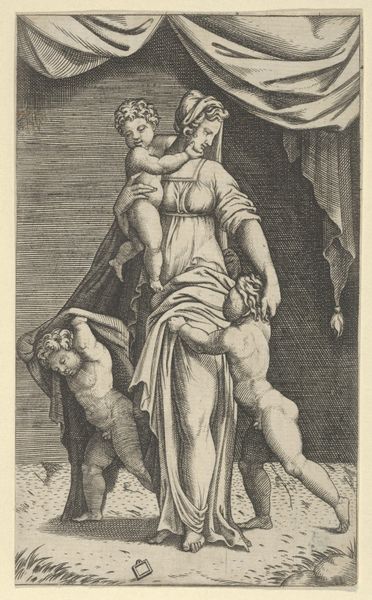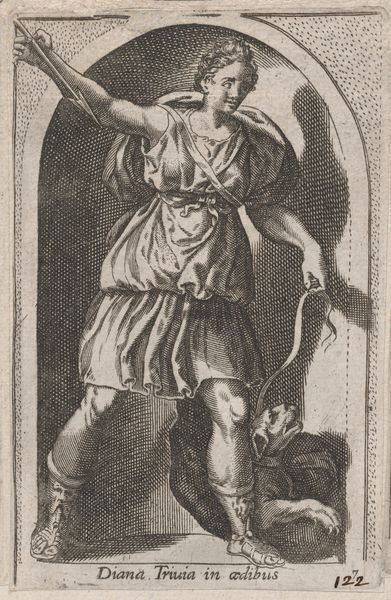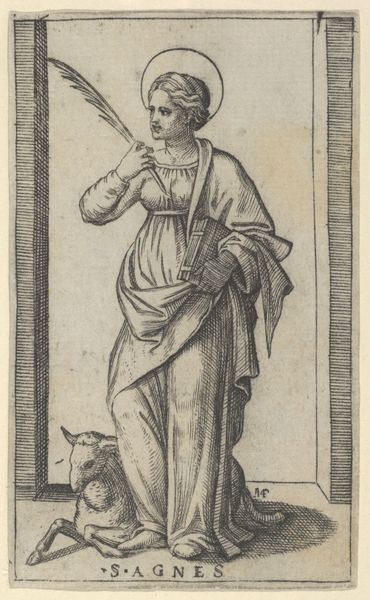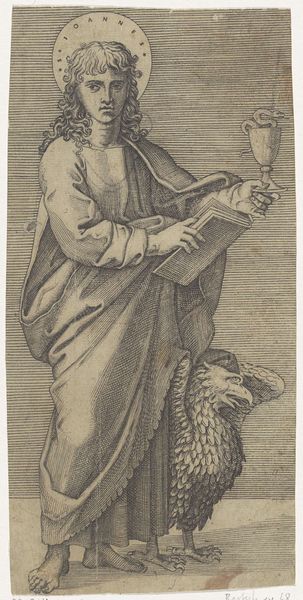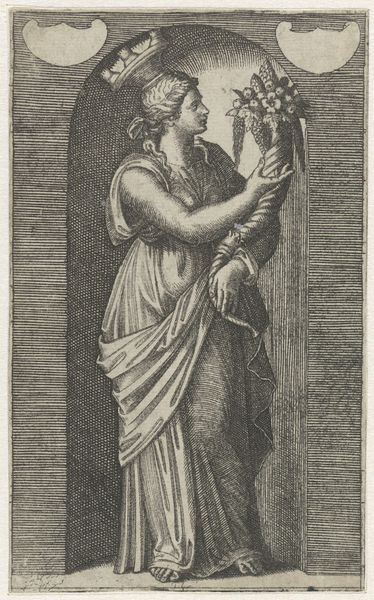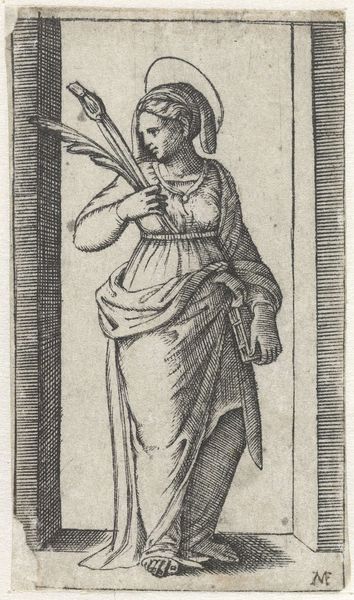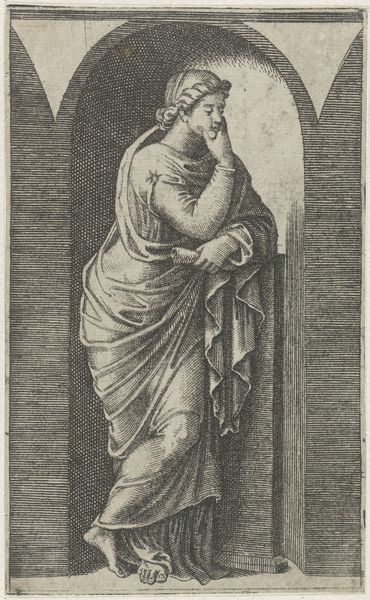
St Lazarus flanked by two dogs, from "Piccoli Santi" (Small Saints) 1495 - 1532
0:00
0:00
drawing, print, engraving
#
portrait
#
drawing
# print
#
dog
#
figuration
#
genre-painting
#
italian-renaissance
#
engraving
Dimensions: 3 1/8 x 1 7/8 in. (8.0 x 4.8 cm)
Copyright: Public Domain
Curator: This engraving is entitled "St Lazarus flanked by two dogs, from 'Piccoli Santi'," and it comes to us from the Italian Renaissance, sometime between 1495 and 1532, by Marcantonio Raimondi. It’s currently part of the collection at the Metropolitan Museum of Art. Editor: What strikes me immediately is the texture. The fine, almost vibrating, cross-hatching creates a dense atmosphere. There's an almost unsettling level of detail for such a small print. It gives it a peculiar sense of restrained energy. Curator: It is small, yes. The detail is fascinating because it reflects the symbolism layered within. St. Lazarus, of course, represents resilience and resurrection, themes that would resonate profoundly with the anxieties of the time—plague, war, general uncertainty. Editor: Anxiety seems an understatement looking at those rather doleful dogs. There is such strong vertical emphasis here that I can't ignore the two seemingly structural uprights. One a blank vertical that contrasts to the heavily inscribed wall behind the figure. Is Lazarus framed as if cornered between death and what other structural limitation? Curator: Interesting observation! The dogs are key, as they are traditional symbols of fidelity, loyalty, but also associated with scavenging, reminding us of Lazarus’s poverty and sickness as described in the Bible. He is, after all, presented after his resurrection in some accounts, as a bishop. And these were common depictions for Lazarus specifically. Editor: The way Lazarus holds the reeds – or perhaps arrows - seems intentionally ambivalent. It is a strangely casual gesture given that those same objects might well function as his emblems or even weapons of defense against his illness or, shall we say, mortality itself. Curator: That duality is precisely the point. The small format forces a kind of intimacy. We are brought close to a figure both holy and wretched. We are reminded of shared humanity, our own vulnerability in the face of hardship. And, by extension, it perhaps encouraged empathy within the community who bought these small devotional objects. Editor: And that intense layering and those strange canines are unsettling and affecting at once. There’s certainly more here than meets the eye initially. Curator: Exactly. And through a nexus of faith, representation and symbolism. Editor: The more I scrutinize the print’s formal qualities, the more I find to appreciate here beyond simply it being a work of Italian Renaissance art.
Comments
No comments
Be the first to comment and join the conversation on the ultimate creative platform.
